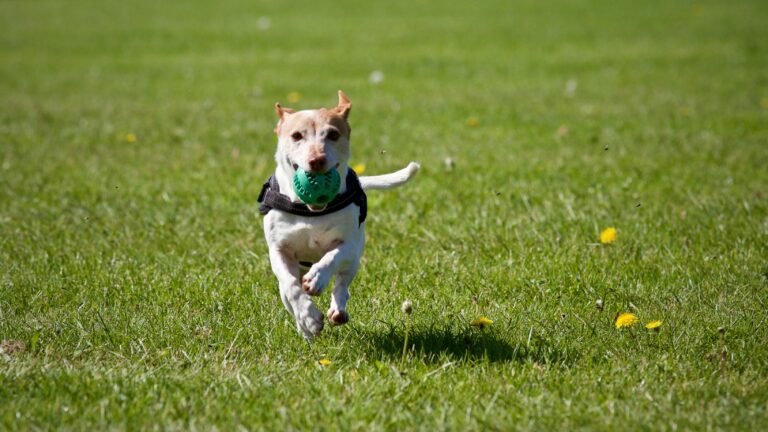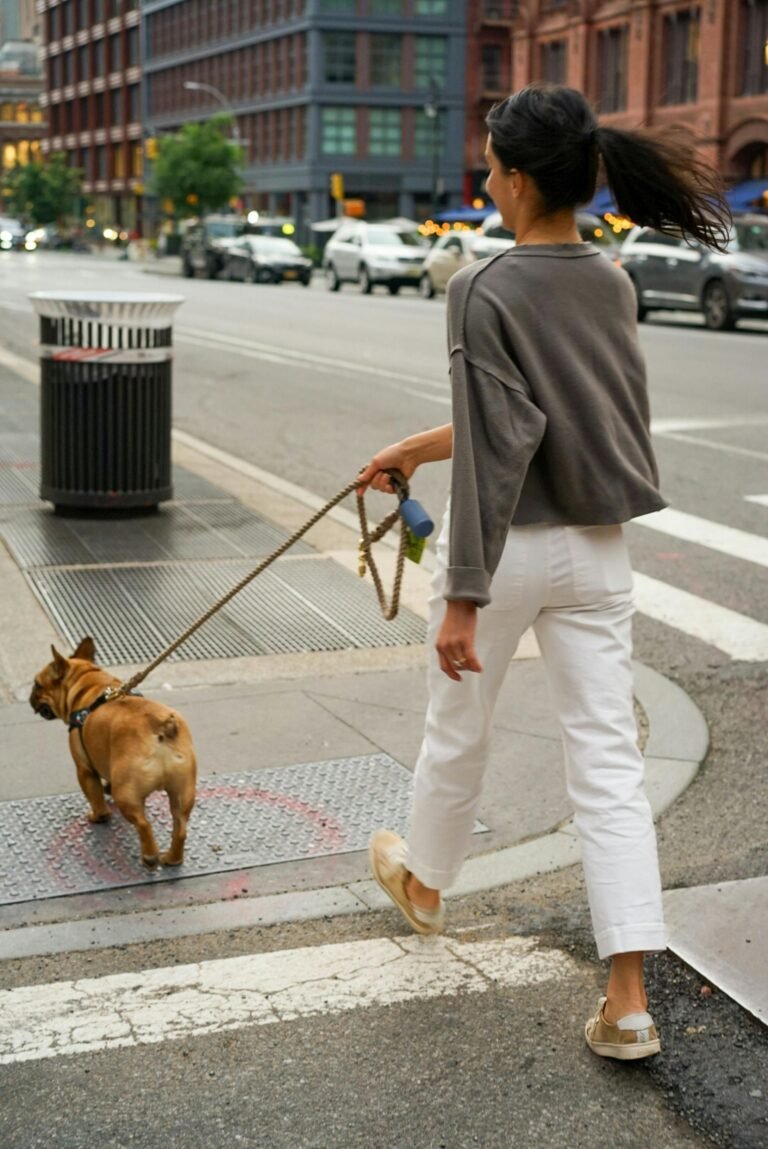Introduction
Balancing a demanding career with the responsibilities of being a devoted dog parent can feel like walking a tightrope. When deadlines loom and meetings run long, it’s easy to feel guilty about leaving your furry friend at home or worry that you’re not giving them the attention they deserve. Yet countless professionals successfully manage full-time work while raising happy, healthy dogs. The secret is proactive planning, creative solutions, and understanding that quality time matters just as much as quantity.
This comprehensive guide explores strategies for busy professionals to maintain a fulfilling work life without sacrificing their dog’s well-being. We’ll cover time management tips, ways to enrich your dog’s day, the value of technology, and the importance of building a support network. With thoughtful adjustments and a bit of experimentation, you can craft a routine that benefits both you and your canine companion.
Understanding Your Dog’s Needs
No two dogs are exactly alike. A high-energy border collie will require more exercise and mental stimulation than a laid-back bulldog. A young puppy needs consistent potty breaks and training, while a senior dog might prefer shorter walks and more naps. The first step in balancing work and dog parenthood is recognizing your dog’s unique needs and tailoring your routine accordingly.
Consider the following factors:
- Age and energy level: Puppies and young adult dogs generally need more exercise and supervision. Older dogs may sleep more but still enjoy gentle activity and engagement.
- Breed characteristics: Some breeds were developed for high activity (e.g., herding or hunting), while others are content with leisurely strolls. Research your dog’s breed or mix to understand typical behavior patterns.
- Health conditions: Dogs with medical issues may require special care, medications, or more frequent vet visits. Schedule necessary treatments around your workday.
- Separation anxiety: Some dogs experience stress when left alone. Signs include barking, destructive behavior, and pacing. Addressing separation anxiety may involve training, environmental enrichment, or professional help.
By understanding these elements, you can better anticipate how much time to allocate for exercise, training, and companionship, ensuring your dog remains content even when your schedule is packed.
Creating a Consistent Schedule
Dogs thrive on routine. Establishing consistent feeding times, walks, and play sessions helps your dog know what to expect and reduces anxiety. As a busy professional, planning ahead is crucial to maintain regularity.
- Morning routine: Start your day with a brisk walk or play session to burn off energy and provide mental stimulation. Feed your dog breakfast at the same time each morning and allow ample time for bathroom breaks.
- Midday check-ins: If you work in an office, consider going home during lunch or hiring a dog walker to break up your dog’s day. For remote workers, schedule a 10‑15 minute break every few hours for short potty breaks or quick games.
- Evening activities: After work, engage in a longer walk, a game of fetch, or training exercises. This helps your dog expend remaining energy, promotes bonding, and reduces the likelihood of restlessness during the night.
- Weekend adventures: Reserve time on weekends for longer hikes, trips to the dog park, or socialization opportunities. This extra stimulation can help make up for busier weekdays.
Use digital tools like calendar reminders or pet-care apps to stick to these routines. Consistency will not only make your dog happier but also simplify your planning by embedding care tasks into your daily rhythm.
Integrating Your Dog into the Workday
Bringing your dog to work isn’t always feasible, but there are still ways to make them feel part of your day. For remote workers, take advantage of the flexibility to involve your dog more directly.
- Interactive toys and enrichment: Treat-dispensing puzzles, snuffle mats, and interactive feeders keep dogs occupied and mentally stimulated while you focus on tasks. Rotate toys regularly to maintain interest.
- Structured breaks: Schedule short breaks to play tug-of-war or practice obedience commands. These micro-sessions provide both exercise and mental challenges, and they help break up long stretches of sitting for you too.
- Comfortable workspace: Create a cozy resting spot near your desk with a soft bed or blanket. Having your dog nearby can reduce separation anxiety and give you periodic stress relief as you pet them during calls or brainstorming sessions.
- Dog-friendly workplaces: If your company allows, bringing your dog to the office can be rewarding. Make sure your dog is well-socialized, fully house-trained, and comfortable around people and other dogs. Bring a crate or bed and pack essentials like water, treats, and toys to keep them content.
Quality Time vs. Quantity
When schedules are tight, it’s essential to make every interaction count. Quality time doesn’t always mean long hours; it’s about being present and engaged when you’re together.
Focus on activities that strengthen your bond:
- Training sessions: Teaching new tricks or reinforcing basic obedience provides mental stimulation and fosters trust. Short, daily training sessions are more effective than occasional, lengthy ones.
- Mindful walks: Instead of rushing through a walk, let your dog sniff and explore. Use this time to observe their behavior and practice loose-leash walking skills.
- Cuddle time: Physical affection is important for many dogs. Set aside time to pet your dog, brush their coat, or simply sit together on the couch. This downtime helps both of you unwind after a long day.
Remember, even 15 minutes of focused play or grooming can be incredibly fulfilling for your dog. They’ll appreciate your undivided attention more than hours spent together while you’re distracted by work.
Using Professional Services
Sometimes you need a helping hand to maintain your dog’s routine. Professional services can fill the gaps in your schedule and provide socialization opportunities for your dog.
- Dog walkers: Hiring a dog walker for midday walks ensures your dog gets exercise and bathroom breaks. Choose a reputable walker who understands your dog’s temperament and needs.
- Doggy day care: Day care facilities offer supervised playtime, socialization, and enrichment activities. They are excellent for highly social or energetic dogs who need more stimulation than you can provide on busy days.
- Pet sitters: For longer work trips or vacations, pet sitters can stay at your home or check in regularly. They offer personalized care and maintain your dog’s routine in a familiar environment.
While these services come at a cost, the peace of mind and improved quality of life for your dog can be well worth the investment. Be sure to research providers, read reviews, and schedule meet-and-greets to ensure the best fit.
Leveraging Technology to Stay Connected
Modern pet technology can help busy professionals maintain a connection with their dogs throughout the day. Devices range from practical to playful and can make a big difference in your dog’s experience when home alone.
- Pet cameras: Two-way video cameras allow you to see and talk to your dog in real time. Some models dispense treats or allow interactive play, giving you control from your smartphone.
- Automatic feeders: Programmable feeders ensure your dog gets meals on schedule, even if you’re stuck in a meeting. They also help manage portion control for weight management.
- Smart toys: Wi-Fi-connected toys can move on their own or respond to remote commands, keeping dogs engaged. Some smart balls can be controlled via an app or set to move randomly throughout the day.
- Health trackers: Wearable devices that monitor your dog’s activity, sleep patterns, and vital signs can alert you to potential health issues. Data logs can help you understand how much exercise your dog is actually getting during the day.
Integrating technology should complement, not replace, human interaction. These tools are best used alongside regular play and exercise routines.
Self-Care for the Human: Managing Your Own Stress
Balancing work and dog parenthood isn’t just about meeting your dog’s needs—it’s also about taking care of yourself. Burnout can lead to frustration and resentment, which your dog will sense. Incorporate self-care practices into your routine to maintain a positive outlook.
- Prioritize sleep: Adequate rest ensures you have the energy for both work and dog-related activities. Establish a bedtime routine that includes winding down with your dog, such as gentle brushing or a short bedtime walk.
- Set boundaries: Communicate your availability to coworkers and family. Block off time on your calendar for dog care and personal time, and protect those slots whenever possible.
- Exercise together: Combine your workout with your dog’s exercise needs. Jogging, hiking, or practicing agility can keep both of you fit and happy.
- Mindful breaks: Use your dog care breaks for mental reset. Step away from screens and focus on the present moment with your dog, which can reduce stress and improve mood.
By addressing your own well-being, you’ll be better equipped to care for your dog and perform effectively at work.
Building a Support Network
No one can do it all alone. Cultivating a support network of friends, family, and fellow dog lovers can provide relief when your schedule becomes overwhelming.
- Family and roommates: If you live with others, coordinate schedules so someone is available for midday walks or feeding. Share responsibilities to ensure consistency for your dog.
- Friendly neighbors: Neighbors with dogs may be willing to trade pet-sitting duties or arrange playdates. Building camaraderie within your community can lead to a mutually beneficial support system.
- Dog-loving coworkers: If your workplace is dog-friendly, collaborate with colleagues to create a schedule that allows dogs to come in on different days or share supervision duties.
- Local dog groups: Join local dog walking groups, online forums, or social media communities where members share advice, resources, and sometimes coordinate care for one another’s pets.
These networks not only offer practical assistance but also provide opportunities for socialization and new friendships—both for you and your dog.
Conclusion
Being a busy professional doesn’t mean compromising your dog’s happiness. By understanding your dog’s unique needs, establishing routines, integrating enrichment into your workday, and seeking support when necessary, you can create a harmonious balance between career ambitions and pet parenthood. Remember that every dog is different; what works for one may need adjustment for another. Stay patient, be creative, and enjoy the journey of discovering a routine that allows both you and your furry companion to thrive.






